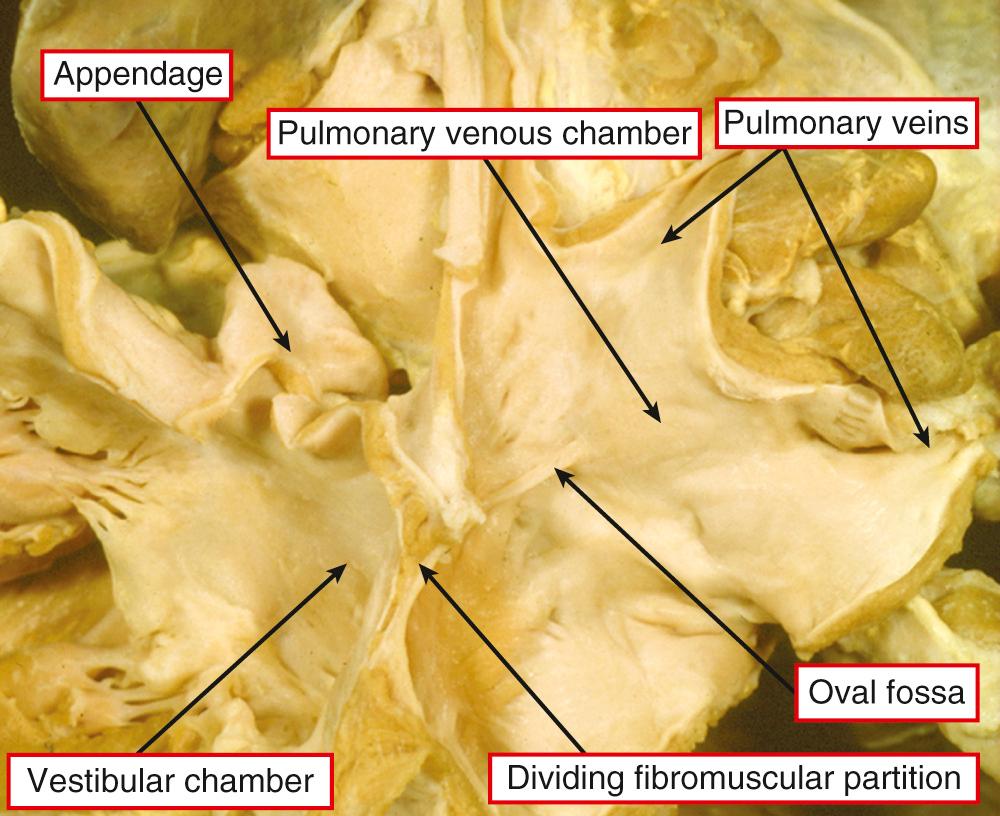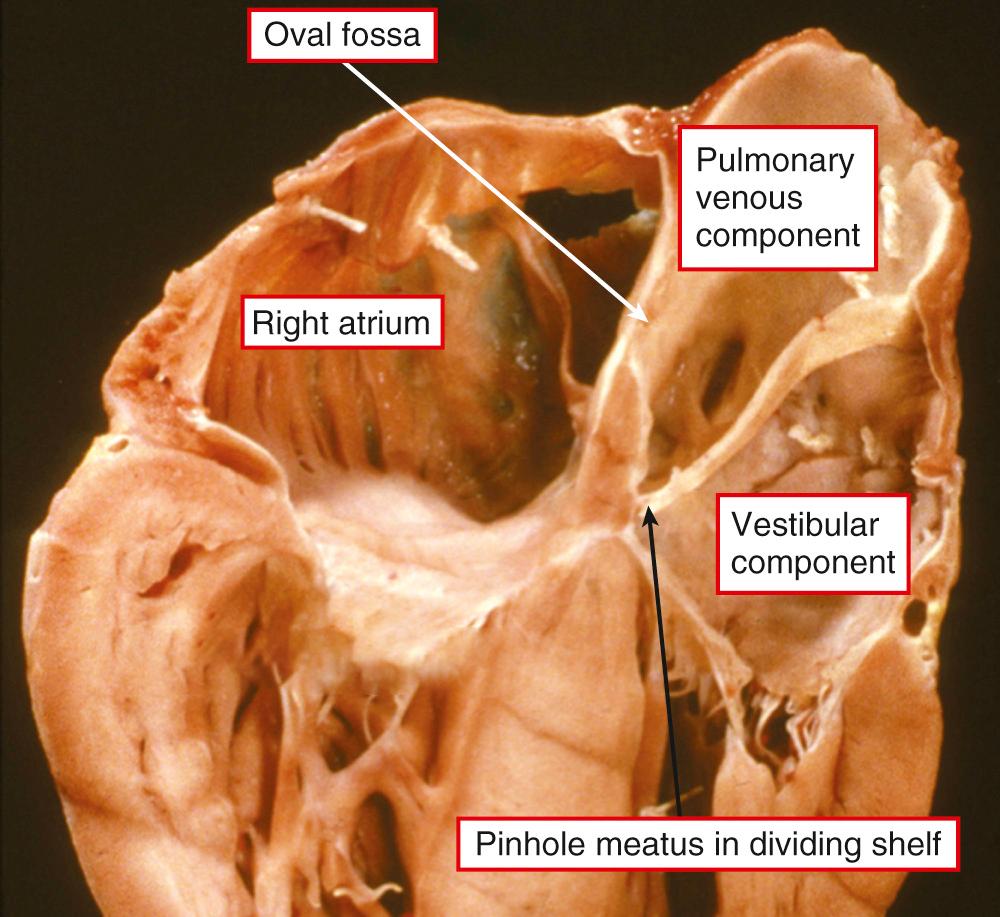Physical Address
304 North Cardinal St.
Dorchester Center, MA 02124
Division, or partitioning, of one of the atrial chambers is a rare malformation. Severe symptoms, or even death, may result if this condition is untreated. When recognized and treated surgically, life expectancy should be normal. Either the morphologically right or the morphologically left atrium can be divided by fibromuscular partitions. Clinically significant division of the morphologically left atrium is by far the most common type, and the most important. Frequently described as “cor triatriatum,” hearts having such lesions do not, in fact, possess three atrial chambers. It is therefore simpler to describe divided left or right atriums. Despite their rarity, the malformations are sufficiently well circumscribed anatomically to warrant their own chapter.
Church is usually credited as being the first to describe division of the left atrium, although Borst coined the term “cor triatriatum.” Subsequent suggested classifications have not all been restricted to cases representing congenital partitioning of the left atrium. One system, for example, included examples of totally anomalous pulmonary venous connection to the coronary sinus, together with aneurysms of the atrial septum. The system proposed by Thilenius and colleagues, which represents the largest review, included rare cases reported with atresia of the mouth of the coronary sinus, along with examples of anomalous pulmonary venous connection to a midline additional chamber, which then drained to the morphologically right atrium. Almost all cases encountered in clinical practice will be of the “classic” type, with intracavitary division of the left atrium. This anomaly, also called “cor triatriatum sinister,” is the focus of this chapter.
In the typical lesion, an obliquely orientated fibromuscular partition divides the morphologically left atrium into a compartment connected to the pulmonary veins, and a second component in communication with the atrial appendage and the mitral valvar vestibule ( Fig. 30.1 ). The components have been described in various ways, with the terms “proximal” and “distal” themselves being used with opposite meanings, according to the fashion in which they are perceived. Such problems can be circumvented simply by describing the pulmonary venous and the vestibular components.

Even if the characteristic feature is the obliquity of the dividing partition, there is still considerable anatomic variability. The significant variations are the size of the communication between the pulmonary venous and vestibular compartments, and the site of an interatrial communication, if present. Other malformations can coexist. It is rare for the communication between the compartments to be nonrestrictive by the time it is discovered. In most examples gaining clinical attention, the area of the communication is significantly smaller than the area of the mitral valve, and it is sometimes barely more than a pinhole ( Fig. 30.2 ). The communication is usually single, but multiple connections are sometimes seen. The atrial septum is intact in up to half of patients. When present, a septal defect is almost always within the oval fossa, communicating most frequently with the pulmonary venous compartment (see Fig. 30.2 ). On occasion, the oval fossa can be in communication with the vestibular component. In rare cases, the communication with the vestibular chamber can be an atrioventricular rather than an atrial septal defect. Although some of the pulmonary veins usually connect to the divided atrium, justifying description of the pulmonary venous compartment, various partially anomalous venous connections have been described. The anomalous pulmonary venous connections, if they exist, are best accounted for in descriptive fashion along with other rare associated malformations, such as mitral atresia or discordant atrioventricular connections.

The characteristic dividing partition is a double layer of myocardium, which has been interpreted to provide a clue to the morphogenesis of the lesion. The right side of the heart is usually considerably hypertrophied because of associated pulmonary hypertension. As with other cases of obstructed pulmonary venous return, there are also marked changes within the lungs and the pleural lymphatics. In terms of morphogenesis, the lesion was initially explained on the basis of failure of absorption of the common pulmonary vein into the left atrium. This “malincorporation” hypothesis was replaced by the “entrapment” concept, which accounts well for the classic anomaly but less readily explains the variant in which the oval fossa is in communication with the vestibular chamber. At present, both theories remain speculative.
Become a Clinical Tree membership for Full access and enjoy Unlimited articles
If you are a member. Log in here